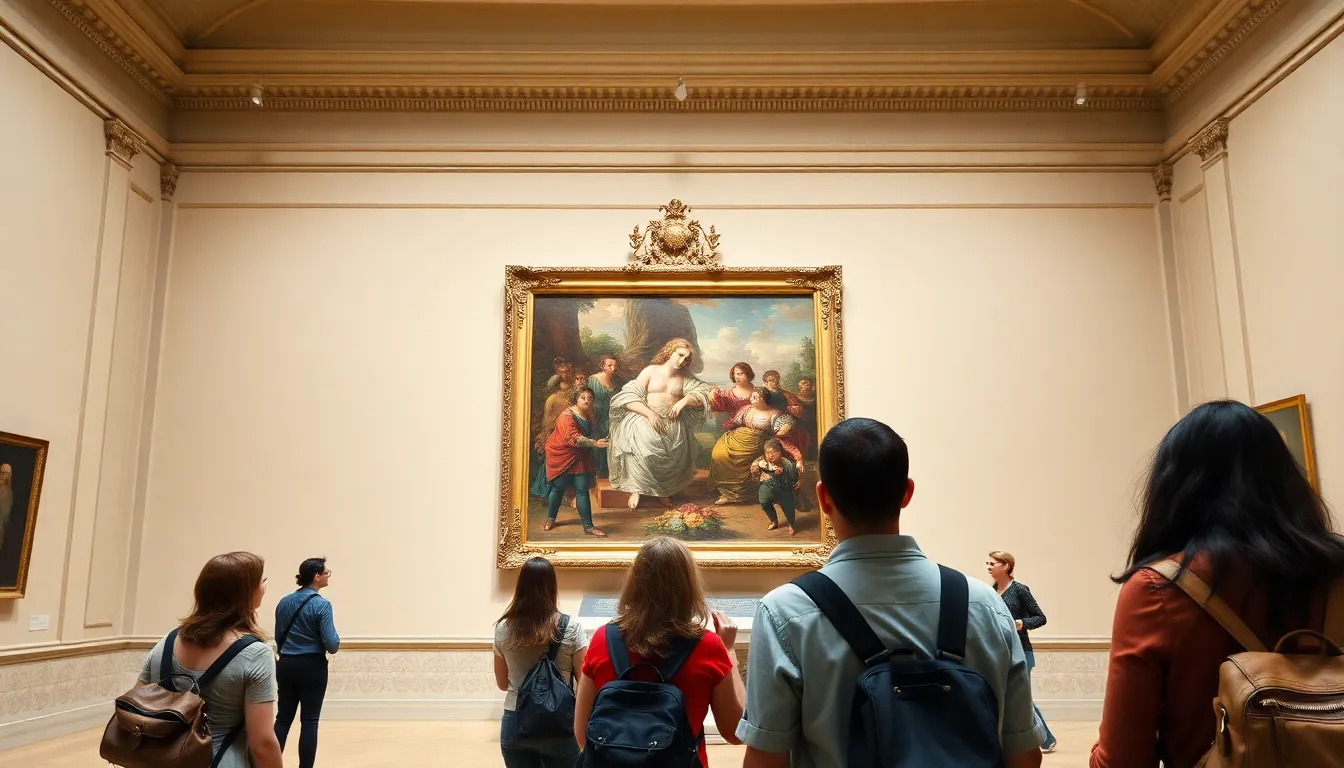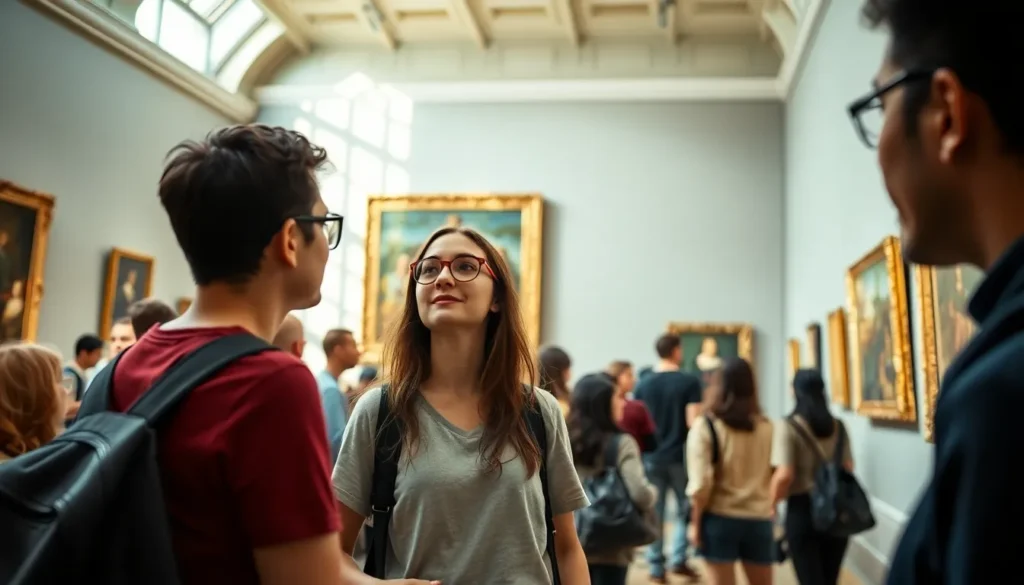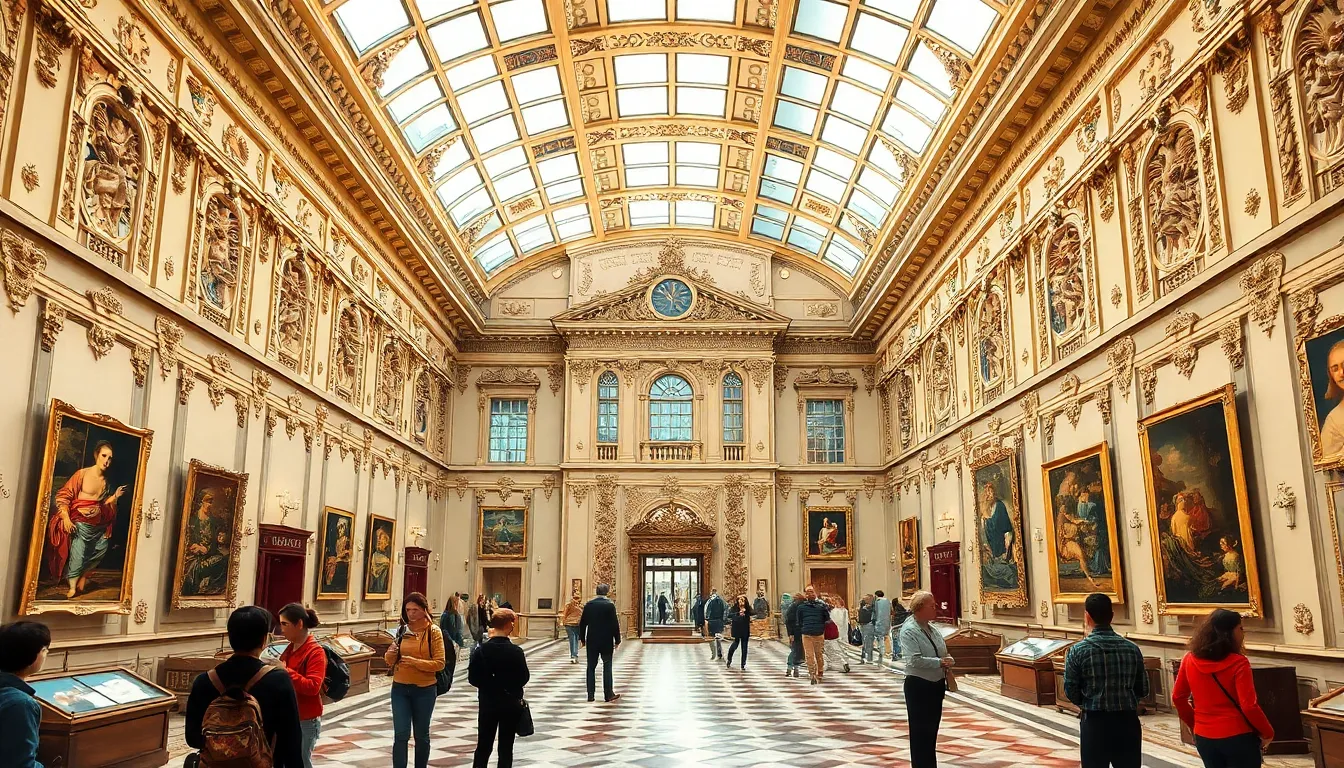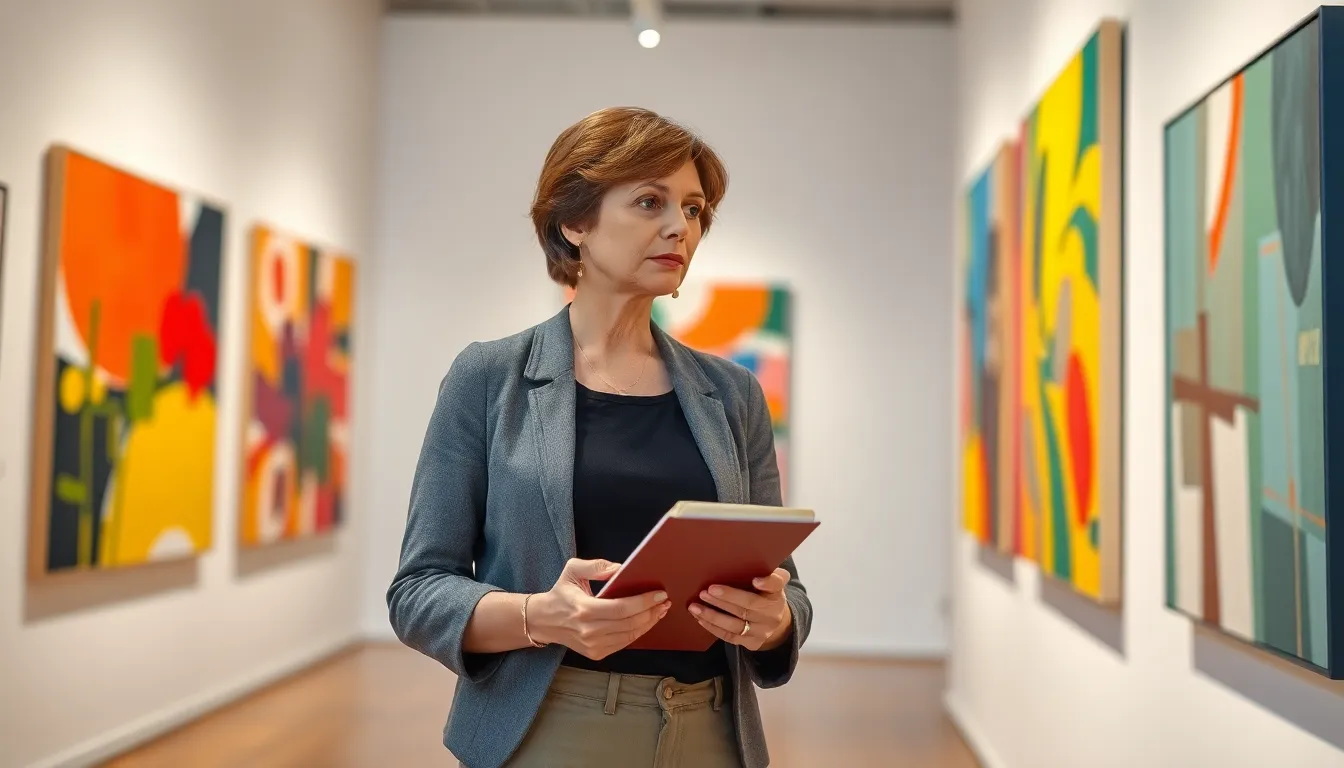Table of Contents
ToggleClassical art exhibitions are like time machines that whisk visitors back to the era of master painters and sculptors. Imagine standing in front of a stunning Rembrandt or a breathtaking Michelangelo, feeling the weight of history and creativity wash over you. These exhibitions offer a rare glimpse into the minds of geniuses who shaped the art world, and let’s be honest, they make even the most mundane Instagram selfie look like a masterpiece.
Overview of Classical Art Exhibitions
Classical art exhibitions showcase masterpieces that span centuries, highlighting the achievements of notable artists. Visitors encounter works from the Renaissance, Baroque, and Neoclassical periods, which offer rich historical contexts. Rembrandt’s evocative use of light and Michelangelo’s dynamic sculptures stand as testaments to artistic innovation.
Engagement with classical art creates a unique opportunity for attendees to appreciate the skill and vision of past creators. Experiencing these exhibitions often deepens one’s understanding of art movements and their influence on contemporary culture. Galleries frequently set the stage with immersive displays that enrich the overall experience.
Exhibitions regularly include curated collections that emphasize specific themes or artist legacies. Some organizers integrate educational components, such as guided tours or lectures, further enhancing visitor understanding. Attendees can explore intricate details through interactive technologies, allowing them to connect more profoundly with each artwork.
Prominent museums around the world—like the Louvre, Uffizi Gallery, and the National Gallery—frequently feature classical art exhibitions. Visitors find themselves amid a diverse array of paintings, sculptures, and drawings. In addition, these exhibitions often attract a wide demographic, making art accessible to all.
Overall, classical art exhibitions create invaluable experiences that resonate with individuals from all backgrounds. They serve as a bridge between the past and present, enriching cultural appreciation. Engaging with these works invites contemplation and inspires future generations of artists and art lovers alike.
Notable Classical Art Exhibitions

Explore some of the highlighted classical art exhibitions that captivate audiences worldwide. Each exhibition showcases masterpieces that invite viewers to appreciate the brilliance of historical artists and their contributions to culture.
Exhibition in Paris
The Louvre hosts remarkable exhibitions that feature works from various classical periods. A recent exhibition showcased the masterpieces of the Italian Renaissance, including paintings by Botticelli and Raphael. Visitors experienced the depth of emotion in these pieces, enhancing their appreciation of art’s evolution. Guided tours offered insights into the historical context of the artworks, enriching attendees’ understanding. This renowned museum continuously draws crowds, making classical art accessible to diverse audiences.
Exhibition in New York
The Metropolitan Museum of Art presents exquisite exhibitions that highlight classical art’s allure. Recently, the museum featured a collection focused on Baroque artists like Caravaggio and Rembrandt. Attendees engaged with interactive displays that provided background on the artists’ techniques and themes. Lectures accompanying the exhibition allowed for deeper discussions on the impact of these artists on modern works. New York’s vibrant art scene fosters an appreciation for classical art and connects visitors with timeless masterpieces.
Key Artists Featured
Classical art exhibitions showcase remarkable talent from various periods. This section highlights key artists whose works define their respective eras.
Renaissance Masters
Renaissance masters like Leonardo da Vinci and Raphael exemplified artistic excellence. Da Vinci’s “Mona Lisa” captures the intrigue of a timeless portrait. Raphael’s “The School of Athens” illustrates humanism and classical philosophy. Both artists employed techniques such as chiaroscuro and perspective to create depth. Exhibitions often feature their works, fostering a deeper appreciation for this transformative era. These masterpieces influence countless artists and inspire viewers worldwide.
Baroque Innovators
Baroque innovators included Caravaggio and Rembrandt, known for their dramatic compositions and emotional intensity. Caravaggio’s use of tenebrism highlights contrasts between light and dark. The street life he depicted resonates with modern audiences. Rembrandt’s portraits delve into human emotion, showcasing vulnerability and depth. Many exhibitions emphasize these artists, presenting their contributions to art history. Educational programs enhance understanding of their techniques and narrative styles. Visitors leave with a greater awareness of how Baroque art shaped contemporary visual expression.
The Impact of Classical Art Exhibitions
Classical art exhibitions significantly influence cultural appreciation and education. They provide spaces where individuals connect with historical narratives and artistic mastery. Visitors often gain insights into the evolution of art movements that shape modern aesthetics.
Educational components, such as guided tours and lectures, enhance the visitor experience. Engaging with knowledgeable curators allows attendees to deepen their understanding of renowned artists’ techniques and philosophies. Participation in discussions further enriches one’s perspective on the historical significance of showcased works.
Prominent venues like the Louvre and Uffizi Gallery play crucial roles in making classical art accessible. These institutions host diverse exhibitions, which often feature curated collections that focus on specific themes or artistic legacies. Masterpieces displayed during these exhibitions resonate with visitors, making history feel immediate and relevant.
Highlighted artists like Leonardo da Vinci and Michelangelo exemplify the timeless nature of classical art. Each of their works showcases innovative approaches that continue to inspire contemporary creators. Attending these exhibitions often sparks curiosity, leading individuals to explore deeper connections with the art and its creators.
Historical context woven through the exhibitions contributes to a broader understanding of culture and society. The emotional depth displayed in artworks by Baroque artists like Caravaggio and Rembrandt captivates audiences, evoking a profound appreciation for their craft. Every exhibition serves as a bridge, linking past and present, inspiring current and future generations of art enthusiasts.
Future Trends in Classical Art Exhibitions
Emerging technologies shape the future of classical art exhibitions, transforming visitor experiences. Virtual reality allows attendees to immerse themselves in recreations of historical settings. Augmented reality enhances interactions, providing dynamic information about artworks.
Sustainability is becoming a priority for exhibition organizers. Many museums adopt eco-friendly practices, reducing their carbon footprint while engaging audiences through environmentally conscious themes. Accessibility also gains focus, ensuring that exhibitions are inclusive for all visitors.
Art events increasingly incorporate multimedia elements, blending classical art with contemporary performances. Some exhibitions feature live art demonstrations, inviting artists to create works inspired by classical pieces. Interactive installations encourage visitor participation, fostering deeper connections to the artworks.
Global collaborations delight audiences by showcasing diverse classical pieces from various cultures. International partnerships enhance the richness of exhibitions, allowing for unique thematic explorations that tie together multiple artistic traditions.
Educational outreach expands to include online platforms. Virtual tours and webinars enable wider access to classical art, reaching audiences who cannot attend in person. Many museums offer digital resources that allow teachers and students to engage with art history more effectively.
Community involvement is more prominent in future exhibitions. Collaborative projects with local artists foster a sense of ownership and pride, bridging the gap between historic art and contemporary perspectives. Curators consider visitor feedback to shape future showcases, ensuring that exhibitions resonate with diverse audiences.
Overall, the future of classical art exhibitions holds promising innovations, making art more engaging and accessible. Enhanced visitor experiences bring history alive, empowering individuals to connect with artistic mastery in meaningful ways.
Classical art exhibitions continue to captivate audiences by bridging the gap between history and contemporary culture. They offer a unique opportunity to experience the brilliance of renowned artists while fostering a deeper understanding of artistic evolution.
With innovative technologies and educational initiatives on the rise, these exhibitions are becoming more engaging and inclusive. Visitors can expect to see enhanced interactions that not only showcase timeless masterpieces but also connect them with the stories behind the art.
As the landscape of classical art exhibitions evolves, they remain essential in inspiring future generations and nurturing a lasting appreciation for the arts.



